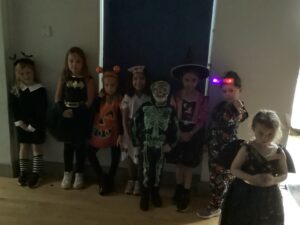Spooktastic Halloween Disco
The FOSP Halloween disco was a hit with the children tonight (especially the sweets and juice at the end).
If you offer any support, big or small, to the Friends of Scholes Primary group, please contact the school office.
Harvest time
We’ve been harvesting some our Nursery vegetables this week including carrots and radishes. Children loved pulling up the carrots and comparing them with a friend to see which was the longest. After we’d washed and peeled the carrots, we enjoyed eating them at snack time. They were really crunchy!
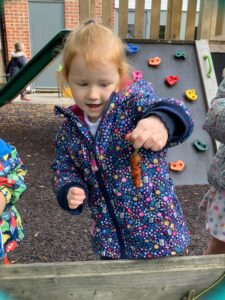
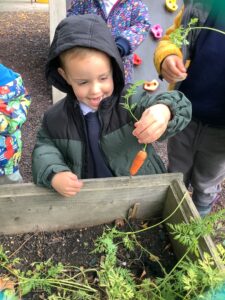

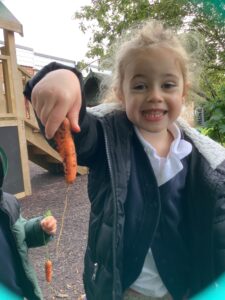
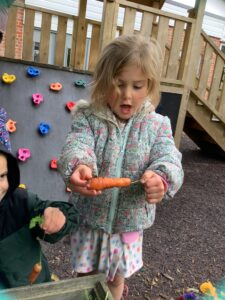
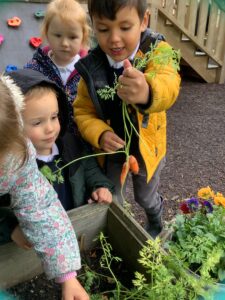
In the maths area, we read a story about a giant carrot and sorted a selection of carrots and potatoes by size. There was lots of discussion about big, little, medium sized, tiny, giant, long and short – lots of size related vocabulary!
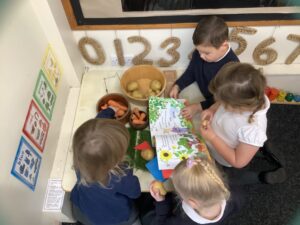
Help at home: Have a go at sorting a selection of objects together. Can you sort them by type, size or colour? Ask your child to explain how they have sorted them and why. This could be a selection of cars that are sorted by colour or perhaps some fruit sorted into groups of the same type. Can they find a car/fruit the same as yours? How is it the same? How is it different?
In the creative area, children had great fun rolling conkers through the paint and around the tub to create patterns (whilst also strengthening and developing their upper body and arm muscles).


And a few other snap shots of our learning this week…
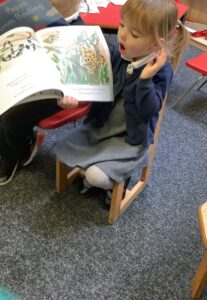
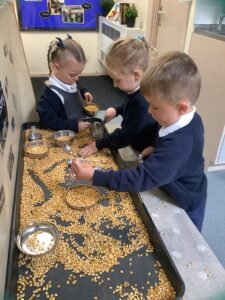
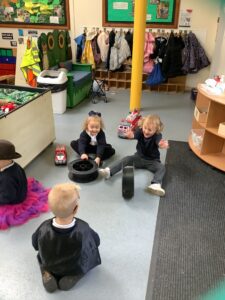
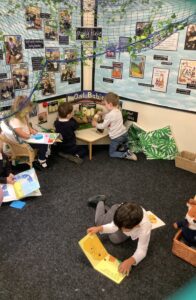
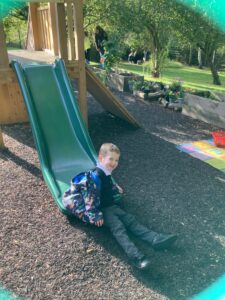
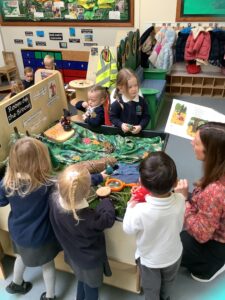
Leaf Man
This week, we have explored all things autumn!


Science
We began by taking an autumn walk around the school field to spot changes in the natural environment.

We collected items to add to our autumn tray in the classroom. We looked closely at the objects and created some observational drawings.

Literacy
We read the book Leaf Man and thoroughly enjoyed looking at the different pictures made using leaves.
Art
Inspired by the book, we made our own leaf pictures. We used a variety of different objects, such as leaves, conkers and sticks.

Maths
Our focus in maths this week has been comparing quantities. We have developed our skills to look carefully and use the language ‘more than’ and ‘fewer than’ to describe sets of objects.
We varied the objects ensuring they had different attributes such as, colour or size to draw attention to the number.
Poetry Picnic
Each week we will be learning a new poem. We will recite this poem each day. By saying the poem out loud, we can focus on the sounds and rhythm of each word or line. We talk to the children about how this can help us become better readers. This week’s poem is called Five Little Pumpkins.
Watch us recite the poem here.
Dates for your diary
We have changed the timing of some our stay and learn session to incorporate an opportunity for you to meet with your child’s teacher and other parents at a coffee morning.
Stay and learn sessions
This is an opportunity for you to come into school to find out about the Early Years Curriculum and watch your child learning in school.
Maths – 15.11.23 – 09.00 – 10.00
Phonics Phase 3 – 16.01.24 – 09.00 – 10.00 (with coffee morning)
Fine Motor Control and Writing –06.02.24 – 09.00 – 10.00 (with coffee morning)
World Book Day- 07.03.24 – 8.50- 9.20
Learning Journey Drop In’s
An opportunity to “drop into” school and share your child’s learning journal with them.
Times – 8.45 am-9.15am and 3.15pm-3.45pm (Tuesday and Thursday)
Week beginning 11.12.23
Week beginning 25.03.24
Week beginning 08.07.24
Phase 3,4 Local Walk
Where in the world am I?
This week, we had great fun on our field trip, investigating land-use in the local area. We discovered that Scholes has the following types of land-use: residential, agricultural, commercial, transport and recreational. We looked at the Peace Flame and Chippy’s Quarry. At home, ask your child to explain the different types of land-use and give some different examples.
Before the walk, we talked about how to stay safe on the trip, including how to cross the road safely and by wearing hi-vis jackets so that we could be easily seen. Here are some photographs. Can you spot the different types of land-use?
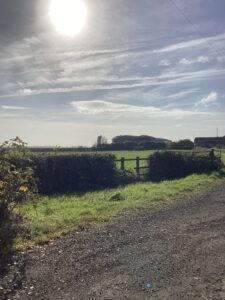
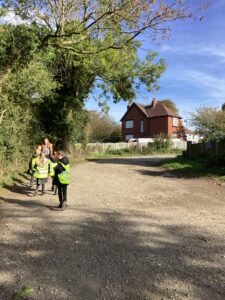
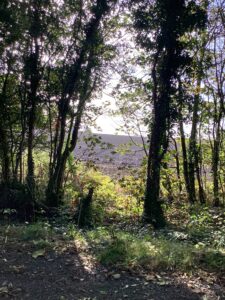


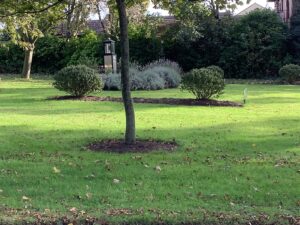
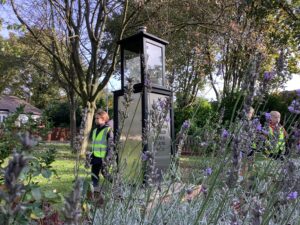

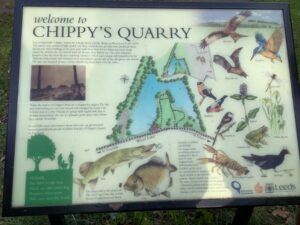
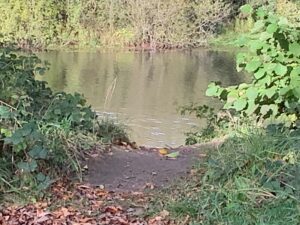



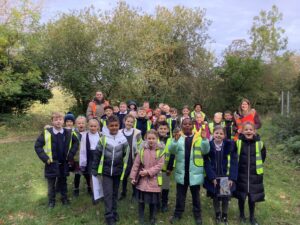
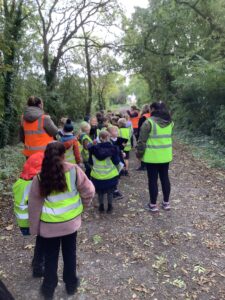
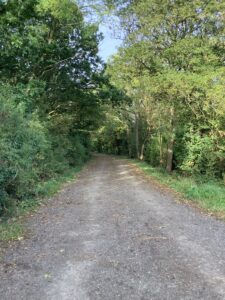
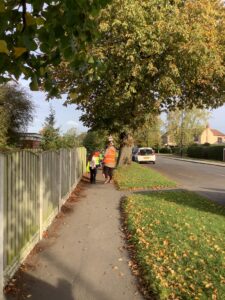
Living and learning: I take part in democratic decisions
This week has been a very special week at Scholes as we have held our Junior Leadership Team elections. All children were invited to prepare a speech – explaining why they would like to be part of the JLT and the changes they would implement. Lots of children did this and presented their speeches to their class on Wednesday. They were absolutely fantastic! Each class then had a voting slot on Thursday morning where they placed their vote into a box in the hall. The winner from each class was announced in assembly today – a huge congratulations to the winners and also a very big well done to everyone who took part and put themselves forward! You were all wonderful and should be very proud of yourselves!
It has been great to see all children taking part in the democratic process of an election and getting a great understanding of what it means to vote and how this system works.
Geography fieldwork – not on the field!
We had an exciting afternoon on Tuesday this week doing some field work in our locality. All classes went on a walk along Station Road identifying trees and counting how many were on our route. The variation of trees was not as wide as on our school field but the trees were much bigger. We looked carefully at a map to mark our route, the trees and a landmark (the shop).
Help at home by looking at the leaves, seeds or berries on different trees and trying to identify them. The Woodland Trust have some ways to help on their website. This guide could also help.
3,4 A Class News
We’re drawing to the end of a busy week in Year 3 and 4!
As part of our Geography topic – Where in the world am I? – we went out into the local area to do some fieldwork. We investigated land use in our locality.
Help at home by quizzing your child on the five types of land use we’ve learnt about: agricultural, residential, recreational, commercial and transport.
This week, we also heard speeches from all the children who wanted to represent our class in the Junior Leadership Team, the JLT. We talked about democracy and carried out a class election. We will find out tomorrow who won the vote.
On Wednesday, as always, we enjoyed book club. This is our chance to enjoy our books and celebrate the reading records the children have brought in. We also heard some of the class share about what they’re reading and how they’d rate it. Below are some pictures from this session.
Help at home by regularly listening to your child read and discussing it with them.
Thank you for your continued support! 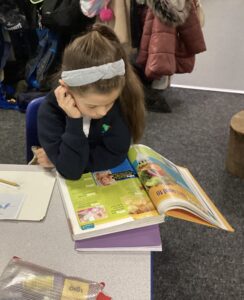
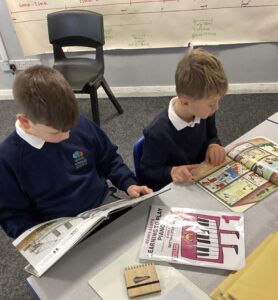

Science – taste
In Science, KS1 have been looking at the 5 sense. This week the sense we focussed on was taste. During this week’s Science lesson, we tasted 3 different pieces of food. We smelled the food first because we know that our sense of smell links to our taste buds.






After we tasted the food we described it in our books. We decided:
- lemon is sour
- dark chocolate is bitter
- crisps are salty
- biscuits are sweet
We had a lot of fun in this lesson.
Living and learning: I take part in democratic decisions
As a school we pride ourselves on the idea of promoting democracy. We really value pupil voice and being part of the Junior Leadership Team is a way that children can make positive changes around school and have their voice hear. This week, we’re holding the elections for a new JLT team. The children in 5,6B have been busy writing their speeches at home and read them aloud in class yesterday. The children spent last night pondering over who they will vote for in the elections today. Who will be lucky enough to be elected? Let’s wait and see!
Tom Palmer local events
This year, some children at school attended an online workshop with author Tom Palmer. Tom Palmer has been in touch to let us know about some local events he is attending in half term.
Message from Tom
For children and families – I am also coming to Leeds on Thursday 2 November
2023 :
* Farsley Book Festival – 10am-11am more here
https://trumanbooks.co.uk/event/flf-kids-day
* Chapel Allerton Library – 2pm
* Pudsey Community Hub and Library – 4pm


